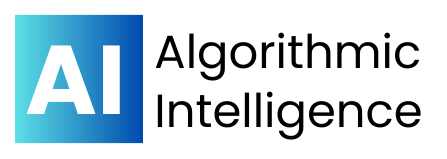When you’re considering borrowing money, understanding the fundamental difference between secured and unsecured loans can save you thousands of dollars and help you make the right financial decision. Whether you’re planning a major purchase, consolidating debt, or handling an emergency expense, choosing the right type of loan is crucial for your financial well-being.
What Are Secured Loans?
A secured loan is a type of financing that requires you to pledge an asset as collateral to guarantee repayment. This collateral acts as security for the lender, reducing their risk if you’re unable to repay the loan. If you default on payments, the lender has the legal right to seize and sell your collateral to recover their losses.
How Secured Loans Work
When you apply for a secured loan, the lender will:
- Evaluate your collateral – They’ll assess the value and condition of your asset
- Place a lien – The lender puts a legal claim on your collateral
- Determine loan terms – Based on collateral value, credit score, and income
- Hold title or documentation – In some cases, they may physically hold your asset’s title
The loan amount typically ranges from 50% to 90% of your collateral’s appraised value, depending on the asset type and lender requirements.
Common Types of Collateral
- Real Estate – Primary homes, investment properties, vacant land
- Vehicles – Cars, trucks, motorcycles, boats, RVs
- Savings Accounts – CDs, savings accounts, money market accounts
- Investment Accounts – Stocks, bonds, mutual funds
- Valuable Items – Jewelry, art, collectibles (less common)
What Are Unsecured Loans?
An unsecured loan doesn’t require any collateral to secure the debt. Instead, lenders rely entirely on your creditworthiness, income, employment history, and debt-to-income ratio to determine approval and terms. These loans are sometimes called “signature loans” because they’re based primarily on your promise to repay.
How Unsecured Loans Work
The unsecured loan process typically involves:
- Credit assessment – Lenders review your credit score and history
- Income verification – They confirm your ability to repay
- Risk evaluation – They calculate default probability
- Rate determination – Interest rates reflect the lender’s risk
Without collateral to recover losses, lenders compensate by charging higher interest rates and implementing stricter approval criteria.
Key Differences: Side-by-Side Comparison
| Feature | Secured Loans | Unsecured Loans |
|---|---|---|
| Collateral Required | Yes – Asset backing the loan | No collateral needed |
| Interest Rates | Generally 3-12% APR | Typically 6-36% APR |
| Loan Amounts | $1,000 – $1,000,000+ | $1,000 – $100,000 |
| Approval Requirements | More flexible credit requirements | Good to excellent credit needed |
| Processing Time | 1-4 weeks (collateral evaluation) | 1-7 days (faster approval) |
| Risk to Borrower | Could lose collateral | No asset loss risk |
| Repayment Terms | 2-30 years | 2-7 years typically |
| Default Consequences | Asset seizure | Wage garnishment, legal action |
Pros and Cons of Secured Loans
Advantages of Secured Loans
Lower Interest Rates Secured loans typically offer interest rates 2-10 percentage points lower than unsecured alternatives because collateral reduces lender risk.
Higher Borrowing Limits You can often borrow larger amounts, sometimes up to 90% of your collateral’s value, making secured loans ideal for major expenses like home renovations or business investments.
Easier Approval Process Borrowers with fair or poor credit (580-669 FICO score) have better approval odds since collateral mitigates lender risk.
Longer Repayment Terms Extended repayment periods (up to 30 years for some secured loans) result in lower monthly payments, improving cash flow management.
Credit Building Opportunity Successfully managing a secured loan can help improve your credit score, especially beneficial for those with limited credit history.
Disadvantages of Secured Loans
Risk of Asset Loss The most significant drawback is the potential loss of your collateral if you default. This could mean losing your home, car, or other valuable assets.
Longer Processing Time Collateral evaluation, appraisals, and additional documentation requirements can extend the approval process by weeks.
Additional Costs You may face appraisal fees, insurance requirements, and other costs associated with securing the collateral.
Limited Flexibility Some secured loans restrict how you can use the funds, unlike the flexibility offered by unsecured personal loans.
Pros and Cons of Unsecured Loans
Advantages of Unsecured Loans
No Collateral Risk Your personal assets aren’t at risk if you experience financial difficulties and cannot repay the loan.
Faster Approval and Funding Without collateral evaluation, unsecured loans often provide same-day or next-day approval with funds available within a week.
Flexible Use of Funds Most unsecured personal loans allow you to use the money for any purpose, from debt consolidation to vacation expenses.
Less Paperwork The application process is typically streamlined with fewer documentation requirements compared to secured loans.
Disadvantages of Unsecured Loans
Higher Interest Rates Without collateral, lenders charge higher rates to compensate for increased risk, potentially costing thousands more over the loan term.
Stricter Credit Requirements Most unsecured loans require good to excellent credit (670+ FICO score), making them inaccessible to borrowers with poor credit.
Lower Borrowing Limits Loan amounts are typically capped at $50,000-$100,000, which may not cover larger expenses.
Shorter Repayment Terms Most unsecured loans offer 2-7 year terms, resulting in higher monthly payments compared to secured alternatives.
Which Loan Type Should You Choose?
Choose a Secured Loan If:
- You have valuable collateral and are comfortable using it as security
- You need a large loan amount exceeding typical unsecured loan limits
- You have fair or poor credit and need help qualifying for financing
- You want lower interest rates to minimize borrowing costs
- You prefer longer repayment terms for lower monthly payments
- You’re comfortable with a longer approval process
Choose an Unsecured Loan If:
- You don’t want to risk losing assets or don’t have suitable collateral
- You have good to excellent credit and can qualify for competitive rates
- You need funds quickly for time-sensitive expenses
- You want flexibility in how you use the loan proceeds
- You prefer a simpler application process with less documentation
- You’re borrowing a smaller amount (under $50,000)
Common Types of Each Loan
Popular Secured Loan Types
Mortgages Home loans secured by the property being purchased, typically offering 15-30 year terms with interest rates ranging from 3-8% APR.
Auto Loans Vehicle financing secured by the car, truck, or motorcycle being purchased, with terms of 3-7 years and rates from 3-12% APR.
Home Equity Loans and HELOCs Loans secured by your home’s equity, offering access to substantial funds for renovations, debt consolidation, or major expenses.
Secured Personal Loans Personal loans backed by savings accounts, CDs, or other assets, providing lower rates than unsecured alternatives.
Business Equipment Loans Commercial loans secured by the equipment being purchased, helping businesses acquire necessary machinery or technology.
Popular Unsecured Loan Types
Personal Loans Flexible financing for debt consolidation, home improvements, medical expenses, or other personal needs, typically ranging from $1,000-$100,000.
Credit Cards Revolving credit lines that allow ongoing borrowing up to a predetermined limit, with variable interest rates and minimum monthly payments.
Student Loans Educational financing (especially federal loans) that doesn’t require collateral, designed to help students pay for college expenses.
Business Lines of Credit Unsecured credit lines for businesses with good credit, providing flexible access to working capital.
How to Qualify for Each Type
Secured Loan Qualification Requirements
Credit Score Most secured loans accept borrowers with scores as low as 580, though better scores (670+) unlock better terms.
Income Documentation Proof of stable income through pay stubs, tax returns, or bank statements, typically requiring debt-to-income ratios below 50%.
Collateral Value Your asset must meet minimum value requirements and be properly insured and titled in your name.
Documentation Needed:
- Government-issued ID
- Proof of income (2+ years)
- Collateral documentation (titles, deeds)
- Insurance information
- Bank statements
Unsecured Loan Qualification Requirements
Credit Score Most lenders require minimum scores of 650-700, with the best rates reserved for excellent credit (740+).
Income Requirements Steady employment history and sufficient income to support loan payments, typically requiring debt-to-income ratios below 40%.
Credit History Established credit history demonstrating responsible payment behavior across multiple account types.
Documentation Needed:
- Government-issued ID
- Proof of income and employment
- Bank statements
- Existing debt information
Interest Rates and Terms Comparison
Secured Loan Rates and Terms (2025)
- Mortgage Loans: 3.5-8.0% APR, 15-30 years
- Auto Loans: 3.0-12.0% APR, 3-7 years
- Home Equity Loans: 4.0-10.0% APR, 5-30 years
- Secured Personal Loans: 5.0-15.0% APR, 2-10 years
Unsecured Loan Rates and Terms (2025)
- Personal Loans: 6.0-36.0% APR, 2-7 years
- Credit Cards: 15.0-29.0% APR, revolving
- Student Loans: 5.0-15.0% APR, 10-25 years
- Business Lines of Credit: 8.0-25.0% APR, revolving
Note: Actual rates depend on creditworthiness, lender, loan amount, and current market conditions.
Frequently Asked Questions
What happens if I default on a secured loan?
If you default on a secured loan, the lender can seize and sell your collateral to recover their losses. This process varies by collateral type – for example, homes go through foreclosure while vehicles are repossessed. You’ll still owe any remaining balance after the sale.
Can I convert an unsecured loan to a secured loan?
Most lenders don’t allow conversion of existing loans, but you could potentially refinance an unsecured loan with a secured loan from another lender to get better terms.
Do secured loans always have lower interest rates?
Generally yes, but not always. Borrowers with excellent credit might find competitive unsecured loan rates that rival secured loan offers, especially for smaller loan amounts.
How much collateral do I need for a secured loan?
Typically, collateral should be worth 110-200% of the loan amount, depending on the asset type and lender requirements. Some lenders allow loan-to-value ratios up to 90%.
What credit score do I need for each loan type?
Secured loans may accept scores as low as 580, while unsecured loans typically require 650+ for approval and 720+ for the best rates.
Can I use my current car as collateral if I still owe money on it?
This depends on your equity in the vehicle. If you owe less than the car’s value, you might be able to use the equity as collateral, but this varies by lender.
Are there tax implications for secured vs unsecured loans?
Loan proceeds aren’t taxable income, but interest may be tax-deductible in certain situations (like mortgage interest or business loan interest). Consult a tax professional for specific guidance.
How quickly can I get each type of loan?
Unsecured loans often provide funds within 1-7 days, while secured loans typically take 1-4 weeks due to collateral evaluation and additional documentation requirements.
Making the Right Choice for Your Financial Future
Choosing between secured and unsecured loans depends on your unique financial situation, credit profile, and borrowing needs. Secured loans offer lower rates and higher amounts but risk asset loss, while unsecured loans provide quick access and asset protection at higher costs.
Before applying for any loan, carefully evaluate your repayment ability, compare offers from multiple lenders, and consider the long-term impact on your financial health. Remember that both loan types can help or hurt your credit score depending on how responsibly you manage the debt.
Consider speaking with a financial advisor or loan specialist to determine which option aligns best with your goals and circumstances. The right choice can save you money and provide the financial flexibility you need to achieve your objectives.
This guide provides general information about secured and unsecured loans. Individual loan terms, rates, and requirements vary by lender and borrower qualifications. Always read loan agreements carefully and compare multiple offers before making a decision.


